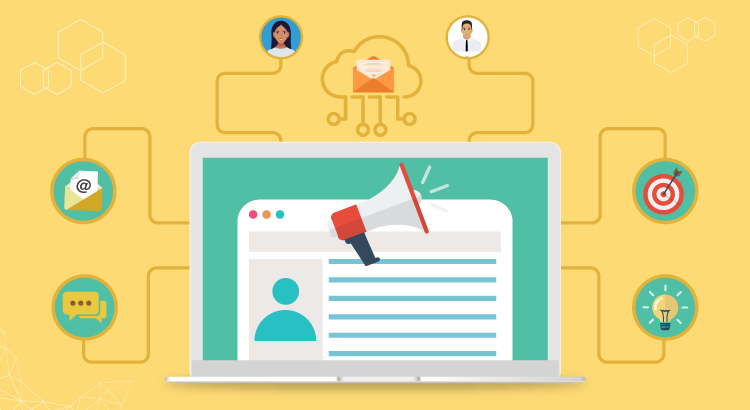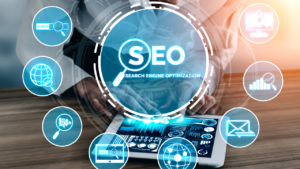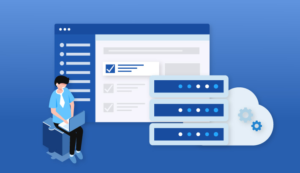One thing that the pandemic has taught us is that everything is dynamic today. What you expect for today might not be suitable for tomorrow. Therefore, you need to constantly keep an eye on the forthcoming trends while staying a few steps ahead of your competitors. Let’s get started with these email marketing trends.
There were many rumors that 2020 will be the end era of email marketing. After the Covid 19 hit the globe, the tables shifted while changing the marketing trends and making email marketing in trend again.
Email marketing is one of the most influential fields that has continued to grow into an effective marketing channel for marketers. Every year, some exciting email marketing trends emerge, and 2021 is no different.
Since 2020 saw severe circumstances, there were drastic changes in customer behavior. New trends appeared in the world of email marketing to cater to these changes.
Most popular Email Marketing Trends
1. Integrating AI Into Email Marketing Strategies
Many businesses still see the concept of AI (Artificial Intelligence) as a bit tricky. Many newbies and experienced marketers are skeptical about applying Artificial Intelligence as an effective email marketing strategy.
Notwithstanding advanced technology, marketers will get more data online than they could assemble with edge-cutting software.
AI is able to collect data with minimum effort involved. There is lots of evidence that AI can beat humans regarding effective outreach, list segmentation, content analysis, etc. Moreover, Artificial Intelligence can also complete tasks that involve understanding emotions, diagnosing illnesses, and solving problems.
With the latest technology, AI’s capabilities are more likely to grow and reach broader horizons. Since we live in the technological era, AI will quickly complete most human tasks, more reliable and more precisely.
It means that it is the ideal time to get an excellent Artificial Intelligence grip and blend it into your email marketing strategies to optimize your marketing campaigns effectively.
2. Redesigning The Structure of Emails
One of the most fluent and dynamic aspects of email marketing is email design. Many external factors come to play while designing an email, and most of it depends upon the creativity and subjectivity of the email marketers.
Just think of it as a fashion show or a fashion week where fashionistas globally provide us with the upcoming seasons’ trends. The most stylish upcoming colors, fabrics, and silhouettes are being publicized in the fashion weeks.
Likewise, web design and layout trends vary in different seasons while dictating what a flourishing website layout should look and feel like.
When we talk about email designs, more aspects other than aesthetics come to play. Almost everyone relies on their smartphone and tabs to check their emails. Hence, as an email marketer, to remain regular demands that the email copy is correctly displayed on the smartphone screens.
For 2021, your email designs should ponder minimalism, for which your emails should be well-structured while revolving around a particular object. The information presented in the email should be meaningful, while bright and bold colors will suffice to attract the client’s attention.
3. The Prospects of Hyper-Personalization
Email marketing serves several different objectives, such as boosting brand awareness, re-engaging customers, etc. But, the end goal of all email marketing campaigns is to make more revenue and increase sales.
Many experienced marketers have concluded that one of the most reliable ways to get your clients is by complete personalization. In case you are wondering, the trend of hyper-personalization goes hand-in-hand with the trend of Artificial Intelligence.
With AI, it becomes more apparent to obtain data and better picture your potential customers’ likes, dislikes, and priorities. AI assures precise personalization by getting more data about your clients. Also, frequent clients are getting more conscious of the volume of data collected about them.
Generally, customers expect to be served better as they share their personal information for enriched personalized offers.
Sadly, there are still businesses that fail to understand the importance of hyper-personalization in email marketing. Numerous mistakes have a damaging impact on your email marketing campaigns.
Upon getting non-personalized emails, customers’ typical behavior automatically deletes emails, unsubscribe, categorize the email as spam, and become less likely to purchase products from the company.
The primary benefits of hyper-personalized email campaigns involve better ROI and brand exposure. For example, personalized birthday emails are competent in generating 340% more revenue than a regular email.
That’s why the business world is becoming more focused on tailoring email content that endorses products and services by audience segment. Individuality and hyper-personalization have a great way to go for efficient email marketing campaigns.
4. Utilizing User-Generated Content
Another email marketing trend that appeared earlier in 2020 is combining user-generated content within email marketing campaigns. UGC (User-Generated Content) incorporates different types of content (images, audio, infographics, and text) generated by the end-users of services and products.
There is a lot of evidence that implies that UGC boosts the conversion rate. According to several marketing surveys, more than 8% of users swear by the value of user-generated reviews.
About 70% of all online buyers of products and services make their purchasing decisions based on the ratings, reviews, and comments left by other users of the respective products and services. Email marketers should embrace the trust and value displayed by their clientele for their products and services in their email campaigns.
Using user-generated content is also an efficient way to encourage new potential clients’ trust levels to promote their products and services. Being an email marketer, you should always rely on user content, particularly when you are struggling with adhering to the quotas of your email content.
5. Launching Drip Campaigns
Never undervalue the power of drip campaigns, particularly within the domains of email marketing. Let understands the power of drip campaigns. The typical email marketing campaigns include separate emails managed by the marketers regarding when and why emails are sent to the subscribers. 2023 is the year of transformation as automation will be frequently used than manual campaigns.
Drip campaigns, also known as email marketing campaigns, refer to an email marketing strategy that combines trigger-based sequenced emails rather than one-time manual shots.
The most significant benefit of launching drip campaigns is that these produce a consistent and cohesive flow of productive communication between the business and its clientele.
Moreover, it also gives the clientele control over their email inbox as they can unsubscribe from incompetent and uncalled emails. It doesn’t matter how astonishing and enlightening the email content is when it tends to appear out of the blue, making it seem spam.
For the above-given reasons, drip emails beat regular emails. Also, emails created as an essential part of a drip email marketing campaign produce friendlier communication between the company and clients.
The critical product/service information is produced in drips, making the clients obtain the exact information they initially expected to see.
6. Increasing Customer Engagement With Interactive Emails
Boosting engagement with customers through interactive emails is another popular email marketing trend that all email marketers should follow.
Apart from that, the trend of engaging emails has been around for quite some time now; it is still regarded as the holy grail of powerful email marketing campaigns. By building interactive emails, customer engagement is dramatically improved while enhancing email interaction between clients and businesses.
The below-given list covers some fundamental elements that are required to sizzle this year:
- Rollover effects as a result of presenting product offerings
- CTAs & animated buttons
- User-generated content & polls, surveys
- Product carousels/ interactive images that are user-controlled
The elements discussed above of interactive emails are associated with other email marketing gamification trends. Marketing gamification, also recognized as gamified solutions, provides email marketers with a competitive advantage in the email inbox. Resultantly, by standing out from other emails in the user’s/ client’s inbox, the emails become difficult to resist and ignore.
7. Address Privacy Concerns & Provide Age Verification
In 2021, one of the best email marketing trends remains data privacy and the privacy of clients. One of the biggest hurdles that online businesses face today is compliance with stringent age verification laws.
All online companies must familiarize themselves with the potential risks sat by a lack of strict systems and age verification systems. There is a different set of law and age-related restrictions rules for every country and region.
The GDPR (General Data Protection Regulation) of the EU (European Union) is one of the most challenging law frameworks for online businesses regarding regulatory compliance. A lack of compliance can make it challenging for online sellers to run their selling and marketing operations sleekly.
According to a report, over 90% of the audience of digital spaces is aged between 3 and 18 years. With the current increase in online services, children and teens have become obsessed with acquiring information and checking out stuff on the internet.
Thus, minors require to be protected from content that is not suitable for their age. That said, traditional digital techniques for the age verification of users have become out-of-date. However, with the right solution for verifying age, product and service providers can still improve their age-restricted services on the internet.
Wrapping up
The world is transforming and so has email, but we’re positive that these new email marketing trends will help you develop more powerful relationships with your customer





